


2022 – 2024
Constructly
Constructly
Increase efficiency
Increase efficiency
product design
user experience
research
usability testing
Constructly is a leading construction technology platform offering innovative solutions to streamline workflows and enhance efficiency across all project stages. Their AI-powered tools tackle key challenges faced by contractors, consultants, and developers. Notably, Constructly's Quality Control solution empowers users to capture and manage snags efficiently, fostering transparency and improved construction quality.
As the Lead Product Designer at Constructly, I spearheaded the design of their groundbreaking platform that automates material procurement and delivery for construction companies. My focus was on developing the Minimum Viable Product to optimize the material ordering process, minimize disruptions and delays, and reduce excess materials. This translates to improved working capital management and data-driven decision making for construction companies
RESEARCH PURPOSES
RESEARCH PURPOSES
Understand user workflow: How they currently perform their
tasks, their action sequences, and the challenges they face
Understand user workflow: How they currently perform their tasks, their action sequences, and the challenges they face
Understand user workflow: How they currently perform their tasks, their action sequences, and the challenges they face
Identify information needs: Understand the types
of information they rely on to do their jobs successfully
Identify information needs: Understand the types of information they rely on to do their jobs successfully
Identify information needs: Understand the types of information they rely on to do their jobs successfully
Determine information importance: What specific
information is critical to our users and why
Determine information importance: What specific information is critical to our users and why
Determine information importance: What specific information is critical to our users and why
How information is used: How our users use the
information they find valuable in their work processes
How information is used: How our users use the information they find valuable in their work processes
How information is used: How our users use the information they find valuable in their work processes
Current tools: What are the advantages
and disadvantages as perceived by our users?
Current tools: What are the advantages and disadvantages as perceived by our users?


METHODOLOGY
METHODOLOGY
Phase 1: In-depth user interviews
Without existing market data, we delved deep into the world of our users,
exploring their workflows, information needs, and challenges
Without existing market data, we delved deep into the world of our users, exploring their workflows, information needs, and challenges
Without existing market data, we delved deep into the world of our users, exploring their workflows, information needs, and challenges
Phase 2: Design and prototyping
Building on insights from interviews, we designed
a system that is automated and adaptable for data editing
Building on insights from interviews, we designed a system that is automated and adaptable for data editing
Building on insights from interviews, we designed a system that is automated and adaptable for data editing
Phase 3: Usability testing
Usability testing provided practical validation, allowing us to optimize
based on real user interactions and meet usability expectations
Usability testing provided practical validation, allowing us to optimize based on real user interactions and meet usability expectations


IN-DEPTH USER INTERVIEWS
IN-DEPTH USER INTERVIEWS
In our pursuit of user-centered design, I partnered
with CJE Analytics to survey our users.
In our pursuit of user-centered design, I partnered with CJE Analytics to survey our users.
In our pursuit of user-centered design, I partnered with CJE Analytics to survey our users.
Before commencing the interviews, I aligned our objectives with
CJE Analytic to ensure a shared understanding of the research goals.
Before commencing the interviews, I aligned our objectives with CJE Analytic to ensure a shared understanding of the research goals.
Before commencing the interviews, I aligned our objectives with CJE Analytic to ensure a shared understanding of the research goals.
We co-authored the interview guide, ensuring it addressed both our
design-focused questions and CJE Analytic's research objectives
We co-authored the interview guide, ensuring it addressed both our design-focused questions and CJE Analytic's research objectives
We co-authored the interview guide, ensuring it addressed both our design-focused questions and CJE Analytic's research objectives
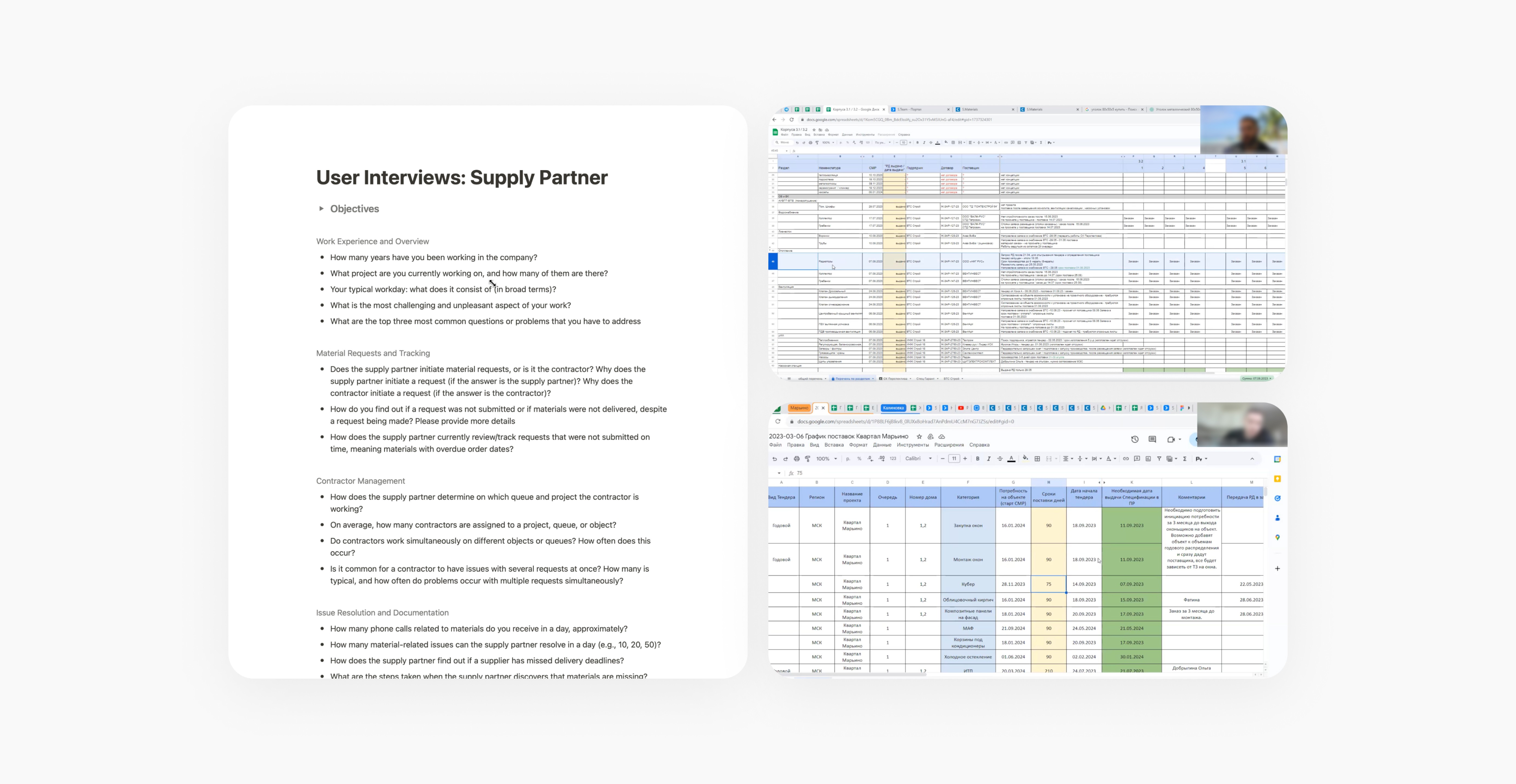

INSIGHTS AND FINDINGS
INSIGHTS AND FINDINGS
Analytic and I worked together to create a block diagram of the user workflow based on insights from 8 user interviews, combining the strengths of design thinking and data analytics.
This diagram visually represents user stories, jobs to be done, stages, requirements, actions, and the information used by our future users
in their current work processes
and with the tools they currently use
This diagram visually represents user stories, jobs to be done, stages, requirements, actions, and the information used by our future users in their current work processes and with the tools they currently use
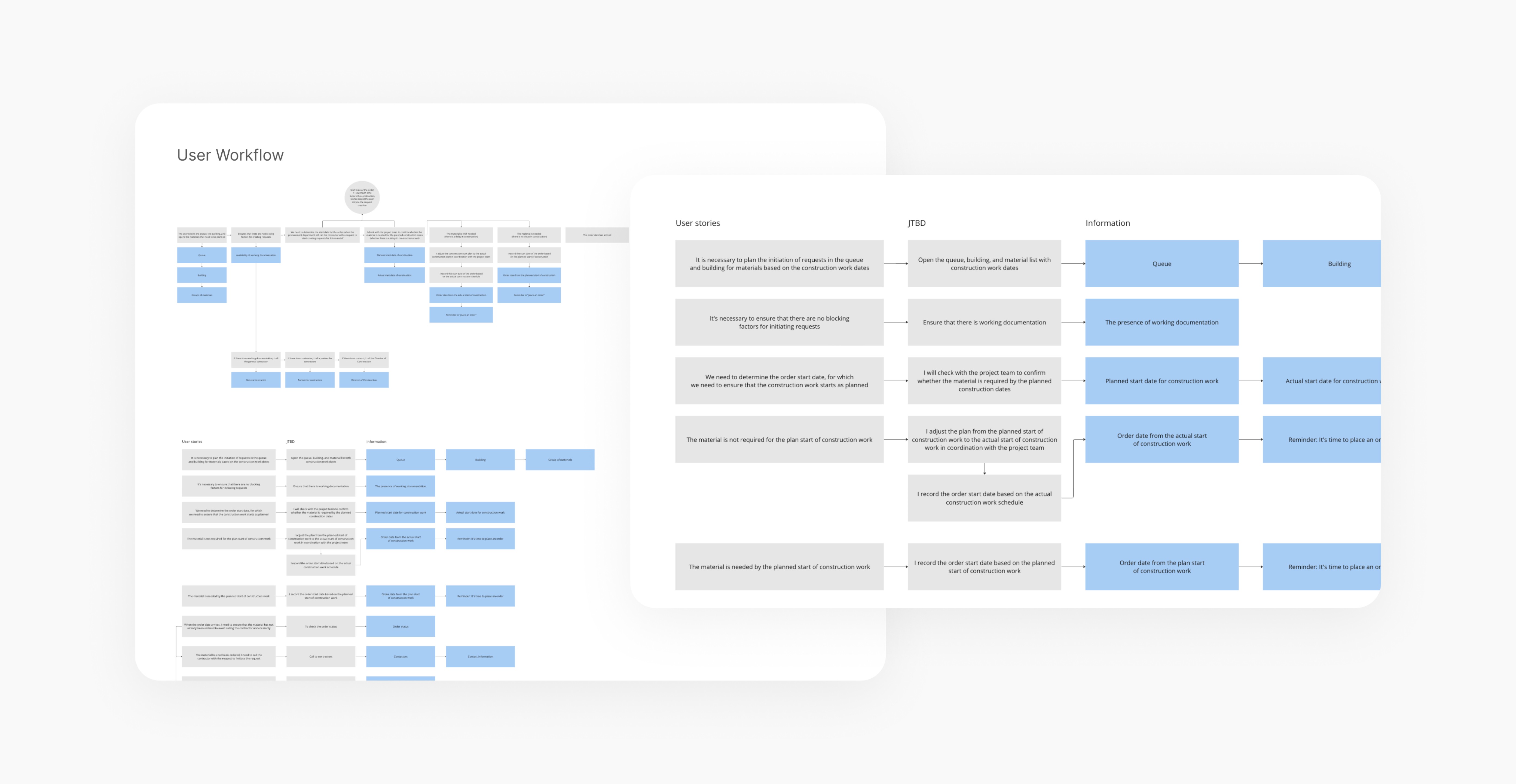

These few screenshots serve as examples
of the current working tools used by our users
These few screenshots serve as examples of the current working tools used by our users
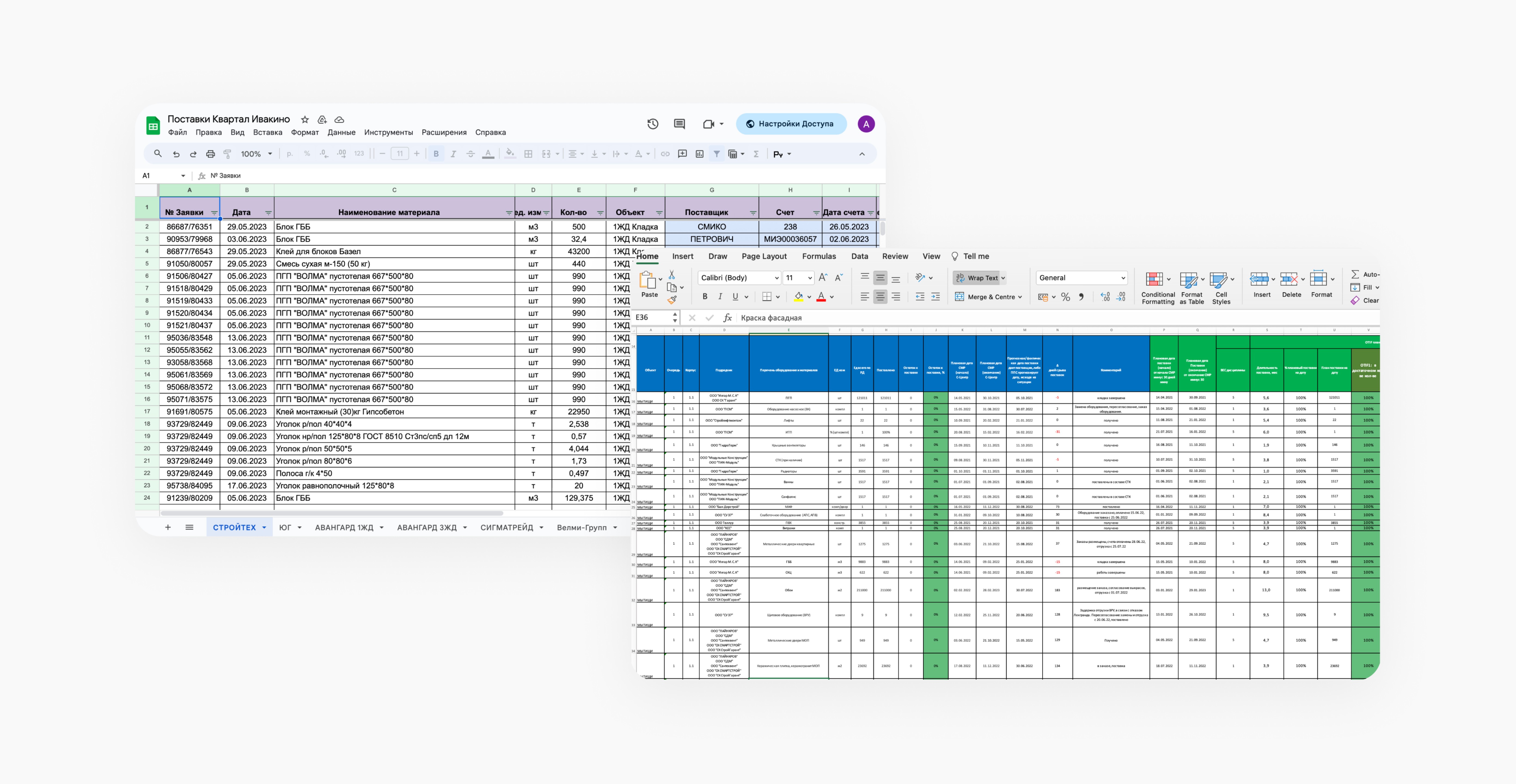

After conducting research, we gained an understanding
of our users workflow, which is divided into two key phases:
After conducting research, we gained an understanding of our users workflow, which is divided into two key phases:
After conducting research, we gained an understanding of our users workflow, which is divided into two key phases:
Supply Planning (our MVP version): Contractors initiate
the delivery of materials by submitting timed requests
Supply Planning (our MVP version): Contractors initiate the delivery of materials by submitting timed requests
Supply Planning (our MVP version): Contractors initiate the delivery of materials by submitting timed requests
Supply Control (upcoming iteration): Our users solve
any challenges that arise during the delivery process
Supply Control (upcoming iteration): Our users solve any challenges that arise during the delivery process
Supply Control (upcoming iteration): Our users solve any challenges that arise during the delivery process
DESIGN AND PROTOTYPING
DESIGN AND PROTOTYPING
We introduced a Gantt chart that not only integrates construction scheduling and material ordering, but also provides increased security through individual user accounts.
This system facilitates planning and real-time tracking
of construction progress, complemented by a legend system for
interpretation of work and material statuses
We introduced a Gantt chart that not only integrates construction scheduling and material ordering, but also provides increased security through individual user accounts. This system facilitates planning and real-time tracking of construction progress, complemented by a legend system for interpretation of work and material statuses
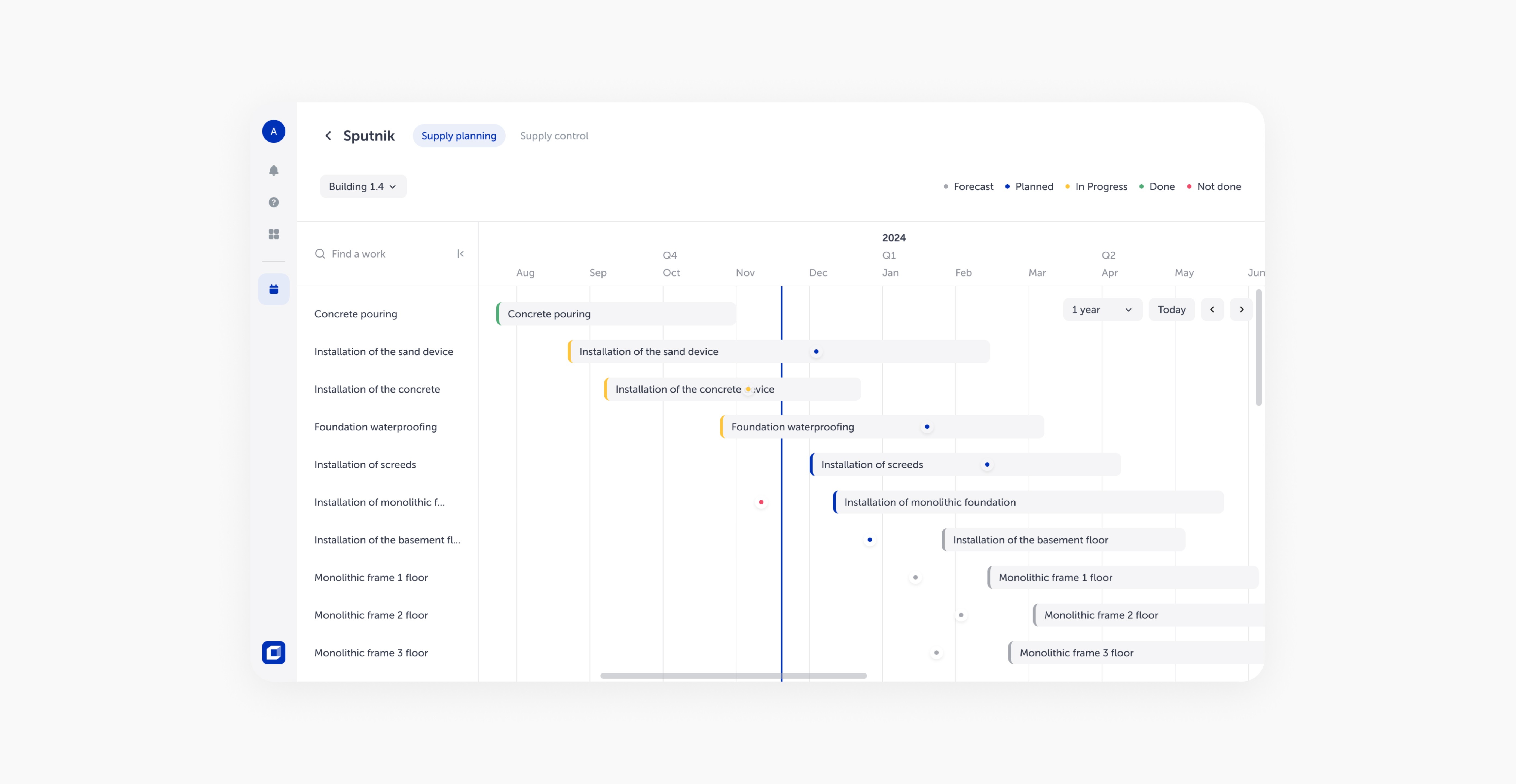

Users used to store project files on their laptops, often leading to data loss
and security risks. Now, our users have a unified entry point to their project, secured with a personal login and password. This not only enhances security but also provides access to data at any time without the need to download files to local devices
Users used to store project files on their laptops, often leading to data loss and security risks. Now, our users have a unified entry point to their project, secured with a personal login and password. This not only enhances security but also provides access to data at any time without the need to download files to local devices


Previously, it was difficult for users to get information about when to create requisitions for material orders and who was responsible for the process.
Now, users can track all pending requisitions within the construction project, get information about requisition creation timelines, and obtain contact information for those responsible for the process. This significantly reduces
the amount of time employees spend gathering and updating information
Now, users can track all pending requisitions within the construction project, get information about requisition creation timelines, and obtain contact information for those responsible for the process. This significantly reduces the amount of time employees spend gathering and updating information
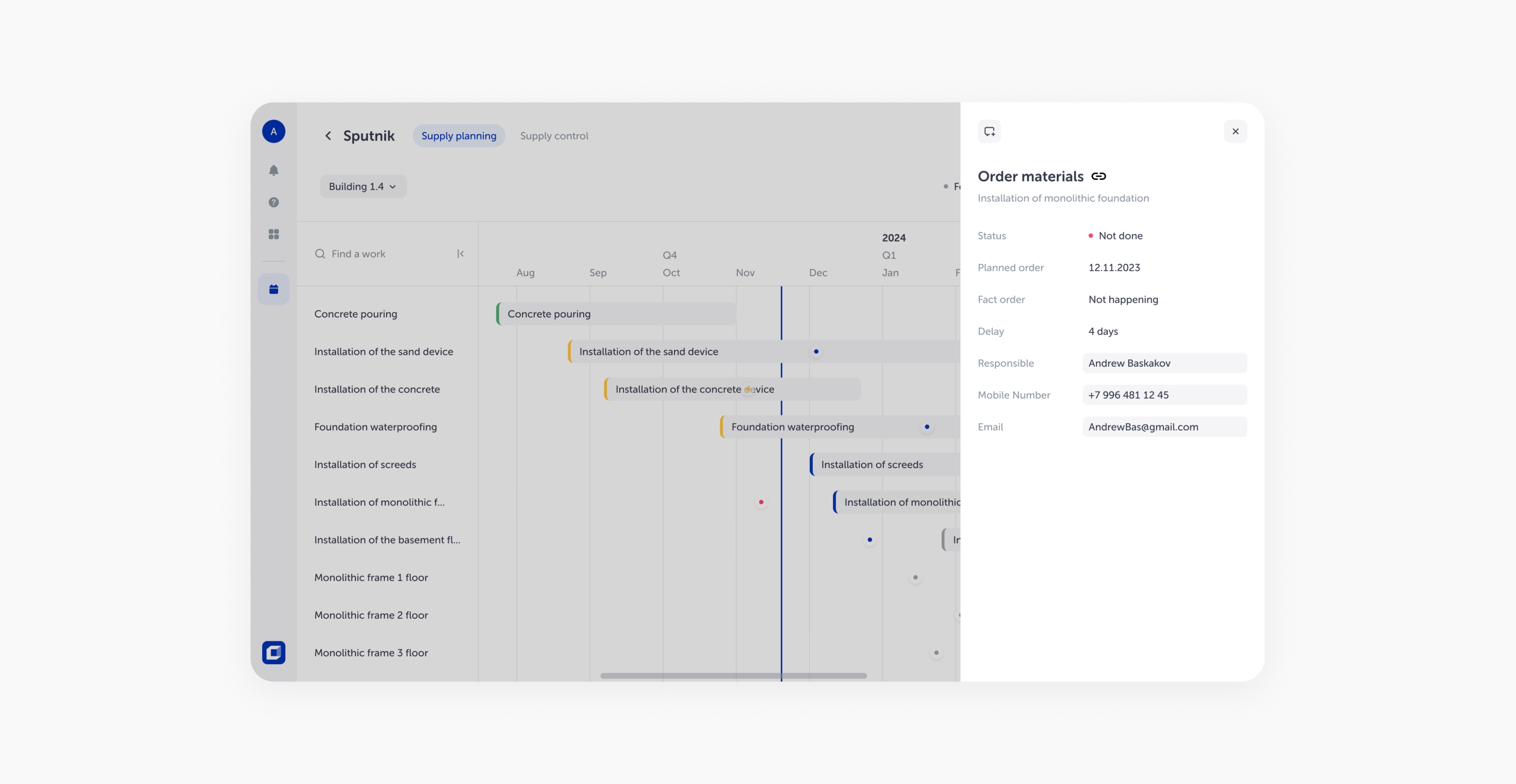

To capture notes, users previously relied on their personal messengers, recorded
data in their phones, or used notepads, often leading to data
loss and security risks.
To capture notes, users previously relied on their personal messengers, recorded data in their phones, or used notepads, often leading to data loss and security risks.
Now, we have provided the capability to capture notes and agreements
directly within
our system. This allows users to see each record in
the context of material orders and ensures the secure storage of data
Now, we have provided the capability to capture notes and agreements directly within our system. This allows users to see each record in the context of material orders and ensures the secure storage of data
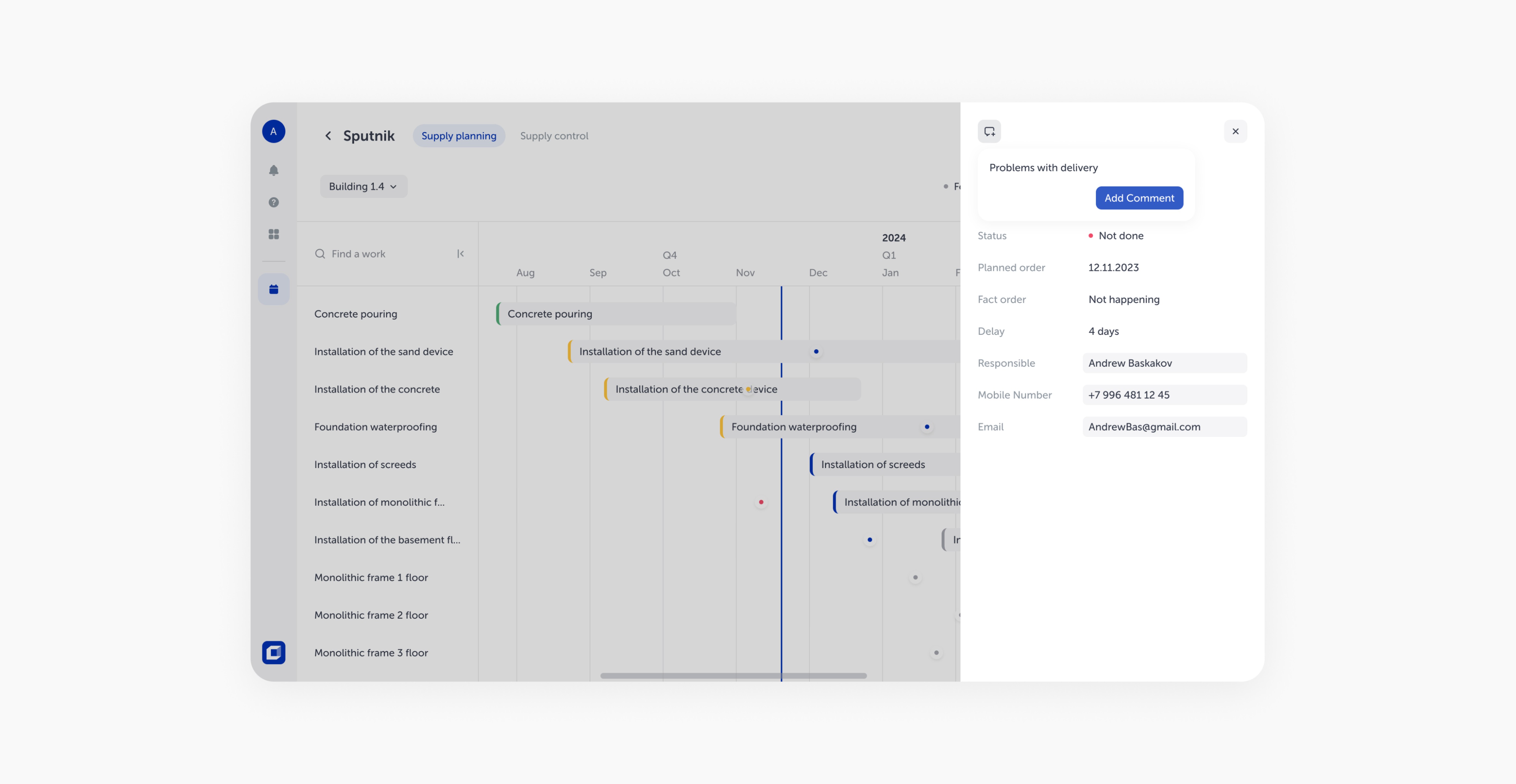

USABILITY TESTING
USABILITY TESTING
We have conducted tests to confirm that users
can efficiently perform supply planning tasks.
We have conducted tests to confirm that users can efficiently perform supply planning tasks.
We have conducted tests to confirm that users can efficiently perform supply planning tasks.
Among the insights we gained was the need to provide critical information about material deliveries, including volumes, order dates, and delivery status.
In addition, users confirmed the appropriateness of dividing the workflow into two parts: scheduling and processing current requests, as identified by our analysis

